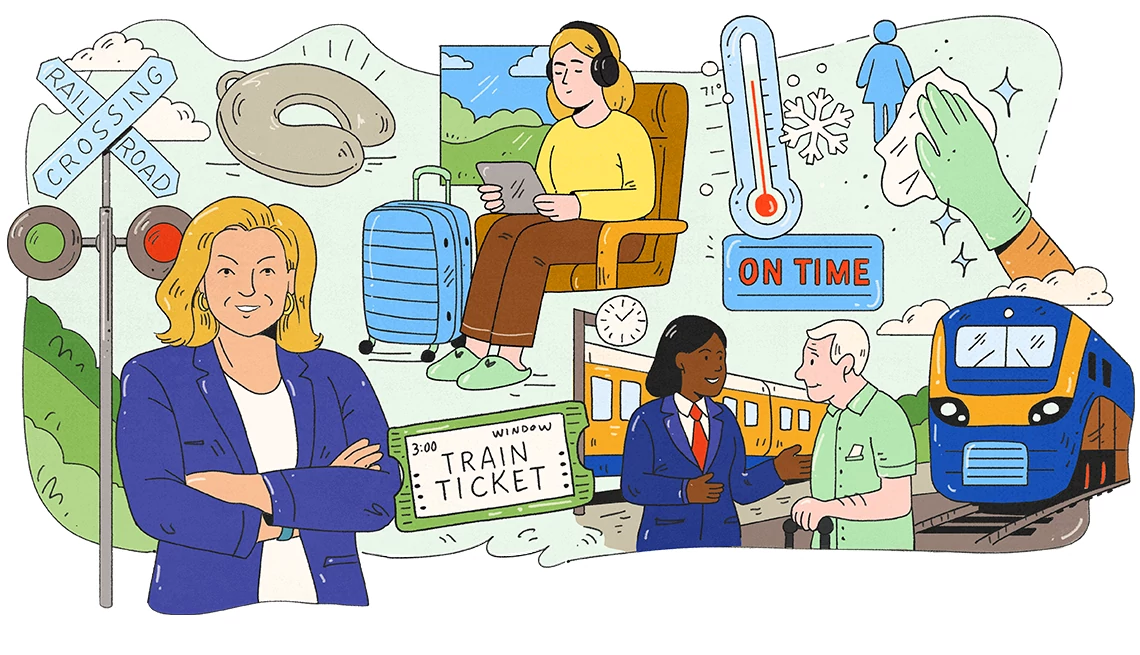AARP Hearing Center
Background
The federal government, as well as almost all state governments, have laws against age discrimination. At the federal level, the Age Discrimination in Employment Act of 1967 (ADEA) protects workers age 40 and older from age-based employment discrimination. The ADEA is modeled on, and in some parts identical to, Title VII of the Civil Rights Act of 1964. Title VII prohibits employment discrimination based on race, sex, color, religion, and national origin. Its interpretation influences the interpretation of the ADEA. In addition, older workers may be subject to discrimination based on race, sex, ethnicity, or religion, as well as age. In contrast to federal law, many states generally prohibit age discrimination alongside all other forms of discrimination in one unified statute.
Title VII and the ADEA share a common purpose in eliminating workplace discrimination and have nearly identical language. But there are some important differences between them. Most notably, the ADEA covers fewer employers and provides fewer remedies. The ADEA applies to employers with 20 or more employees, whereas Title VII applies to those with 15 or more employees. Title VII expressly includes applicants for employment, whereas the ADEA does not. Title VII permits victims to recover compensatory and punitive damages in addition to lost wages and benefits, while the ADEA does not. The ADEA allows recovery of lost wages and liquidated damages only. This lack of remedies constrains a court’s ability to make victims of age discrimination whole. It also inhibits the ability of victims with lower incomes to be represented by private attorneys since attorneys’ fees are generally based on a percentage of the monetary damage award.
Differences have emerged in the way courts have interpreted the ADEA compared with Title VII. This has resulted in less protection for older workers. For example, Supreme Court decisions have made it easier for employers to justify a discriminatory impact under the ADEA than under Title VII. They need only show that the policy or practice was based on a “reasonable factor other than age.” They do not have to meet the more stringent “business necessity” requirement under Title VII. The Equal Employment Opportunity Commission issued regulations that define the “reasonable factor other than age” defense in a way that makes the disparate impact theory a meaningful tool to fight age discrimination. To date, few courts have relied on them.
Other Supreme Court decisions also have limited the ability of workers to bring successful claims based on age. These include: Kimel v. Florida Board of Regents, 528 U.S. 62 (2000) where the Court ruled state employees cannot get money damages from employers; Hazen Paper Co. v. Biggins, 507 U.S. 62 (2000) which held that discrimination based on “proxies” for age, like years of service, did not constitute intentional age discrimination; and Kentucky Retirement Systems v. EEOC, 554 U.S. 135 (2008) that found discrimination based on pension status, which could include age and years of service, did not constitute intentional discrimination. Most notably, in 2009, the Supreme Court decided a case, Gross v. FBL Financial Services, Inc., 557 US 167 (2009), where the petitioner sued his employer alleging intentional age discrimination in violation of the ADEA. The Court ruled that where more than one factor may have been at work, older workers must show that age was a deciding factor that caused their adverse treatment. It cannot be just one of the factors the employer considered. This decision has made it particularly difficult for workers alleging age discrimination to prevail in court. It also has had ramifications beyond the age-discrimination context. Federal courts have applied its reasoning to the Americans with Disabilities Act, other civil rights statutes, and state antidiscrimination laws.
Proposed federal legislation, the Protecting Older Workers Against Discrimination Act, would restore the burden of proof to where it was before the Court’s 2009 decision. It would ensure that the standards are the same for all employment discrimination victims.
Victims of age discrimination face other challenges even when cases are decided in their favor. The Small Business Job Protection Act of 1996 established that damages for emotional distress caused by nonphysical injury, including unlawful discrimination, are taxable. In contrast, damage awards for emotional distress stemming from a physical injury are not. Also, awards of back pay or lump-sum advance wages received in a single year are likely to be taxed at a higher marginal rate than normal earnings.
An issue of increasing importance is the application of the ADEA and other civil rights laws to emerging practices in hiring. Scouring want ads and sending out paper resumes is a thing of the past. It has been replaced by social media job notices and online applications. Regrettably, compliance with age discrimination and other civil rights laws badly trails the growing dominance of job search and recruitment by social media platforms.
In late 2017, older workers sued major employers for age discrimination as part of a class action. The plaintiffs asserted that Facebook allowed employers to exclude users above certain ages from getting job ads and that Facebook advised employers how to place such ads. In a landmark settlement with civil rights organizations in 2019, Facebook announced that advertisers could no longer target users by age, gender, and ZIP code for housing, employment, and credit offers.
In addition, a growing number of employers are using artificial intelligence (AI) tools throughout the hiring process to increase efficiency, lower costs, improve the applicant experience, and achieve a better quality of new hires. But doing so can create and perpetuate biases that disadvantage older workers, people with disabilities, and groups that have historically faced discrimination. This often happens if the data used to train the tools is inaccurate, unrepresentative, or otherwise biased. These tools can produce harmful results if they are not adequately evaluated and supervised (see also Artificial Intelligence).
Many AI assessment tools claim to predict job success by measuring traits, skills, or even facial expressions that are not necessary to perform the job. However, there is limited to no research that supports such predictions. These tools include game-based assessments that are focused on soft skills, such as good fit and personality, as well as facial analysis. In 2021, HireVue, a major provider of AI-based hiring tools, removed the facial analysis component from its screening assessments after claims that it perpetuated discriminatory hiring practices.
Other AI tools base their recommendations entirely on correlations—statistical relationships between variables—without considering whether they are causal or even logical. For example, one resume screening company found that having the name “Jared” and playing high school lacrosse were predictors of success. However, these characteristics clearly do not cause people to be good at their jobs.
Despite potential problems, AI tools also can be used to mitigate bias. For example, some provide text analysis to help employers debias their job descriptions. They can identify words and phrases that may incline some demographic groups rather than others to pursue a job opportunity. In addition, they can help reduce certain types of unconscious HR bias, such as favoring candidates who remind hiring managers of themselves or who fit in with the existing culture.
The Equal Employment Opportunity Commission (EEOC) has issued guidance to explain how the Americans with Disabilities Act and Title VII apply when AI tools are used to make or inform decisions about whether to hire, promote, terminate, or take similar actions toward applicants or current employees. Various federal agencies, including the EEOC and the Department of Justice’s Civil Rights Division, also have clarified that their existing legal authority to enforce civil rights, nondiscrimination, and other vital legal protections applies to the use of automated systems, including AI, as well as other innovative new technologies.
STRENGTHENING LAWS AND PRACTICES AGAINST AGE DISCRIMINATION: Policy
STRENGTHENING LAWS AND PRACTICES AGAINST AGE DISCRIMINATION: Policy
Antidiscrimination laws
Federal and state lawmakers should ensure that laws against age discrimination offer safeguards parallel to those afforded other protected classes. They also should ensure the continued strength of these laws. Such laws should protect against discrimination regardless of its source, including human actions or those resulting from the use of an artificial intelligence (AI) tool (see also Artificial Intelligence).
Job applicants should receive meaningful notification about how they will be assessed, including if AI will be used, so that they can determine whether to seek reasonable accommodations.
Congress should enact legislation to restore the full force and effect of the Age Discrimination in Employment Act (ADEA) and other laws affected by the Gross, Kimel, Hazen Paper, and Kentucky Retirement System decisions.
Congress should pass legislation that provides rights and remedies under the ADEA that are at a minimum on parity with Title VII of the Civil Rights Act. It should expand the ADEA’s reach by lowering the jurisdictional threshold to 15 or more and amend section 4(a)(2) of the ADEA to make it indisputable that outside job applicants may challenge hiring policies and practices that adversely affect older individuals. It should also provide the same kinds and amounts of damages under the ADEA as under Title VII.
State and local laws should ensure that the right to equal opportunity in employment on the basis of age or disability is on par with other civil rights. The rights and remedies provided in state and local laws and ordinances should, at a minimum, be modeled on those found in Title VII. State legislatures should reject proposals to weaken protections from workplace discrimination for any group. State courts should not mechanistically apply the Supreme Court decisions that weaken the ADEA’s protections, ignoring key underlying differences with federal law.
Antidiscrimination practices
A qualified third party should be required to evaluate AI tools used to inform employment decisions for reliability, accuracy, and fairness before their deployment and routinely thereafter. The results of these evaluations should be made public without revealing personal or proprietary information (see also Artificial Intelligence).
Assessments for job applicants, such as games powered by AI, must only evaluate traits and skills that are necessary to perform the job.
Taxation of damages awards
Policymakers should remedy the current inequitable and inconsistent tax treatment of damages awards. This includes the taxation of wages, compensation for emotional distress, and damages received under the Age Discrimination in Employment Act and other civil rights laws.
Multiple discrimination
The Equal Employment Opportunity Commission should develop and issue guidance on what constitutes multiple discrimination and incorporate this idea into its procedures for intake, tracking, investigation, and resolution of charges.































































